[bannerTop]
Welcome to our Shmokiads “Virus” removal guide. The following instructions will aid you in removing the unwanted software from your PC.
What is Shmokiads “Virus” and how can you remove it? First of all Shmokiads.com is not a malicious website. However an adware/browser hijacker type of threat often redirects unsuspecting users to said website. If you’ve landed on this page seeking for the answers of these questions, then here you are going to find the solution. You are dealing with a browser hijacker, which has probably made quite a mess in your Chrome, Firefox or other default browser that you are using. It has probably replaced your homepage or search engine with some strange unfamiliar one and on top of that, now every time you try to search something on the web you get redirected to a bunch of annoying ads and sponsored pages. Fortunately, we are here to show you how to effectively get rid of all these potentially unwanted activities along with the intrusive browser hijacker itself. At the end of this page, you are going to find a removal guide, which will show you exactly how to uninstall Shmokiads “Virus” from your system. This will immediately remove the changes that have taken place in your browser and you will be able to browse the web normally again. But first, let us tell you a few important specifics about the browser hijackers and their nature.
What kind of software is a browser hijacker?
Browser hijackers are a specific type of software, which, fortunately for you, is not malicious. Programs like Shmokiads “Virus” are not created by some kind of cyber criminals, so they are not related to criminal activities like online fraud and harmful infections. However, due to their rather aggressive behavior, these programs very often may get mistaken for some nasty virus. That’s why many users who come across software like Shmokiads “Virus” get panicked at first. But the truth is, there isn’t much to panic about, because a browser hijacker is not capable of harming your system the way that a real virus or some nasty threat like Ransomware or a Trojan horse would do.
In fact, browser hijackers are online advertising tools used by the marketing industry and different web developers for quite an aggressive advertising method known as Pay-Per-Click. They basically use tools like Shmokiads “Virus” to display different types of promotional messages, ads, pop-ups, new tabs and sponsored websites on your screen and earn from your clicks. Unlike the on-site ads that you frequently come across online, however, these ads are generated by the browser hijacker that is installed on your computer. So, unless you uninstall it, you will be constantly redirected to different intrusive advertisements and your browser may face some unauthorized changes.
Can Shmokiads “Virus” affect your computer in a bad way?
As we already said, no serious harm could be done to your computer, so your files and your system are not exposed to risk if you have Shmokiads “Virus” on your PC. However, there are some side effects of browser hijackers, which may be considered as potentially unwanted and may give a good reason to some users to remove this kind of software from their computer. For example, most of browser hijackers can be used to track your online activity. This is done usually for marketing purposes. The advertisers behind the software may use the collected information to learn more about your browsing habits and preferences so that they can display more of their sponsored ads to you. For some users, having their online activity tracked is something that they may not be OK with, so for them uninstalling the intrusive program may be a solution.
Another not fatal but still very annoying consequence of having a browser hijacker on your PC is the significant slowdown that it may cause to your browser and your system. A program like Shmokiads “Virus” may use a fair share of your system resources for its useless ads-displaying activity. That’s why don’t get surprised if your screen freezes at some point, or your browser suddenly becomes unresponsive or crashes. Once you remove the program, however, all these effects will disappear.
How could Shmokiads “Virus” possibly sneak inside your machine and how to prevent it in the future?
Have you recently downloaded and installed new software on your PC? If yes, then most probably the browser hijacker came on your PC along with it. These programs usually get distributed in software bundles along with some other attractive applications, free software or automatic installation managers. Spam, torrents, freeware and shareware platforms, ads, or even direct downloads may also contain software of this type. That’s why, it is important for you to avoid downloading software installers from non-reputed web locations and if you happen to do so, then you should know how to customize it so no potentially unwanted software would get installed along without your consent. For that, we always advise our readers to use the “Advanced/Custom” option when running a setup and carefully read the EULA of every new software that they intend to install.
Shmokiads “Virus” Removal
I – Uninstallation
[bannerMiddle]
- Use the Winkey+R keyboard combination, write Control Panel in the search field and hit enter.

- Go to Uninstall a program under Programs.

- Seek the unwanted software, select it and then click on Uninstall
- If you are unable to spot Shmokiads “Virus”, search for any unrecognized programs that you do not remember installing on your PC – the unwanted software might disguise itself by going under a different name.
II – Safe mode and revealing hidden files
III – Cleaning all your browsers
- Go to your browser’s icon, right-click on it and select Properties.

- Go to the Shortcut tab and in the Target make sure to delete anything written after “.exe”.

- Now, open your browser and follow the instructions below depending on whether you are using Chrome, Mozilla or IE.
- Chrome users:
- Go to your browser’s main menu located in the top-right corner of the screen and select Settings.
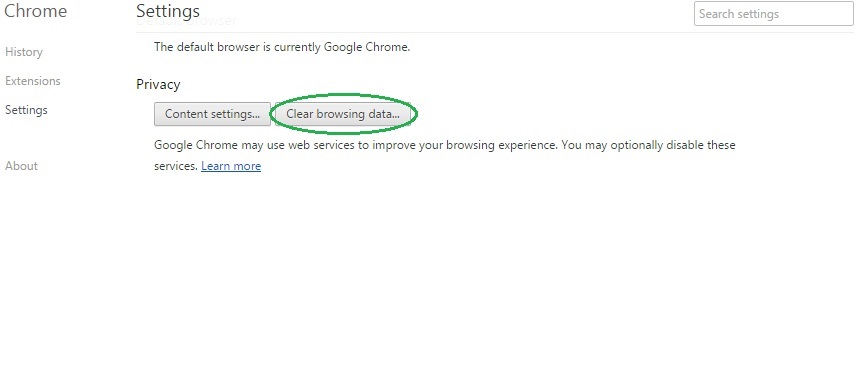
- Scroll down, click on Show Advanced Settings and then select Clear browsing data. Just to be sure, tick everything and clear the data.
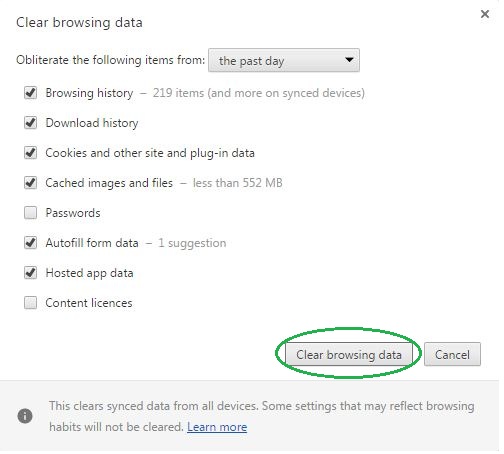
- Now, in the left pane, go to Extensions and look through all extensions that are integrated within your browser. If you notice any suspicious add-on, disable it and then remove it.
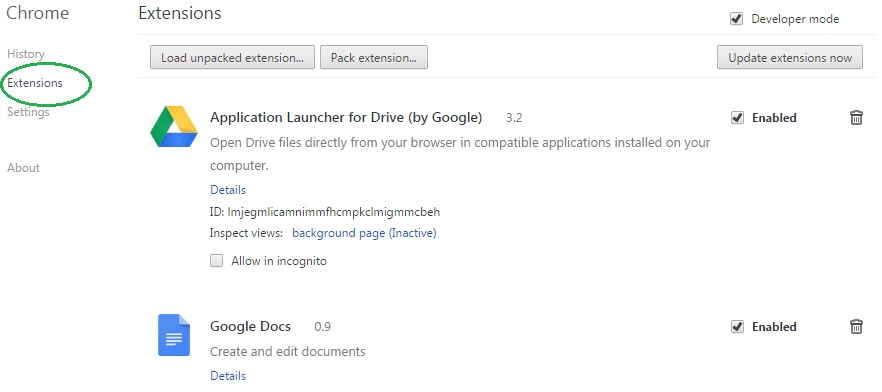
- Firefox users:
- Similarly to Chrome, go to the main menu and select Add-ons and then Extensions.
- Remove any suspicious browser extensions that you may have even if they do not have the name Shmokiads “Virus” on them.
- IE users:
- Go to Tools and select Manage add-ons.

- Click on all add-on types from the left pane and check if there is anything suspicious in the right panel. In case you find anything shade, make sure to remove it.
IV – Removing Shady processes
[bannerMiddleSecond]
- Go to your start menu, type Task Manager in the search field and from the results open View running processes with Task Manager.

- Thoroughly look through all processes. The name Shmokiads “Virus” might not be there, but if you notice any shady looking process that consumes high amounts of memory it might be ran by the unwanted program.
- If you spot the process ran by Shmokiads “Virus”, right-click on it, open its file location and delete everything in there. Then go back to the Task Manager and end the process.

V – DNS check
- In the start menu search box write View Network Connections and open the first result.
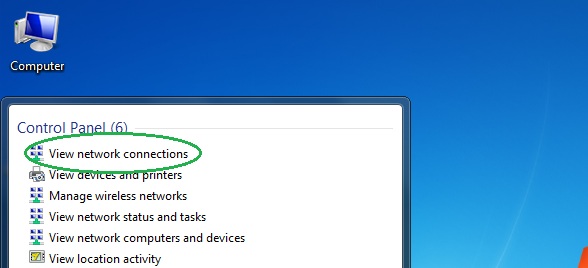
- Right-click on the network connection you are using and go to Properties.

- Select Internet Protocol Version (TCP/IPv4) and click on Properties.

- If Obtain DNS server addresses automatically is not checked, check it.
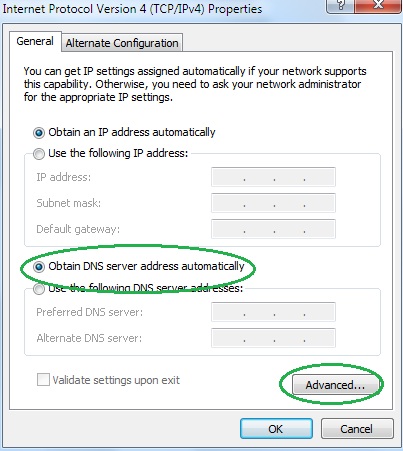
- Go to Advanced and select the DNS If there is anything in the DNS server addresses field, remove it and click OK.

- Click OK on the rest of the opened windows.



